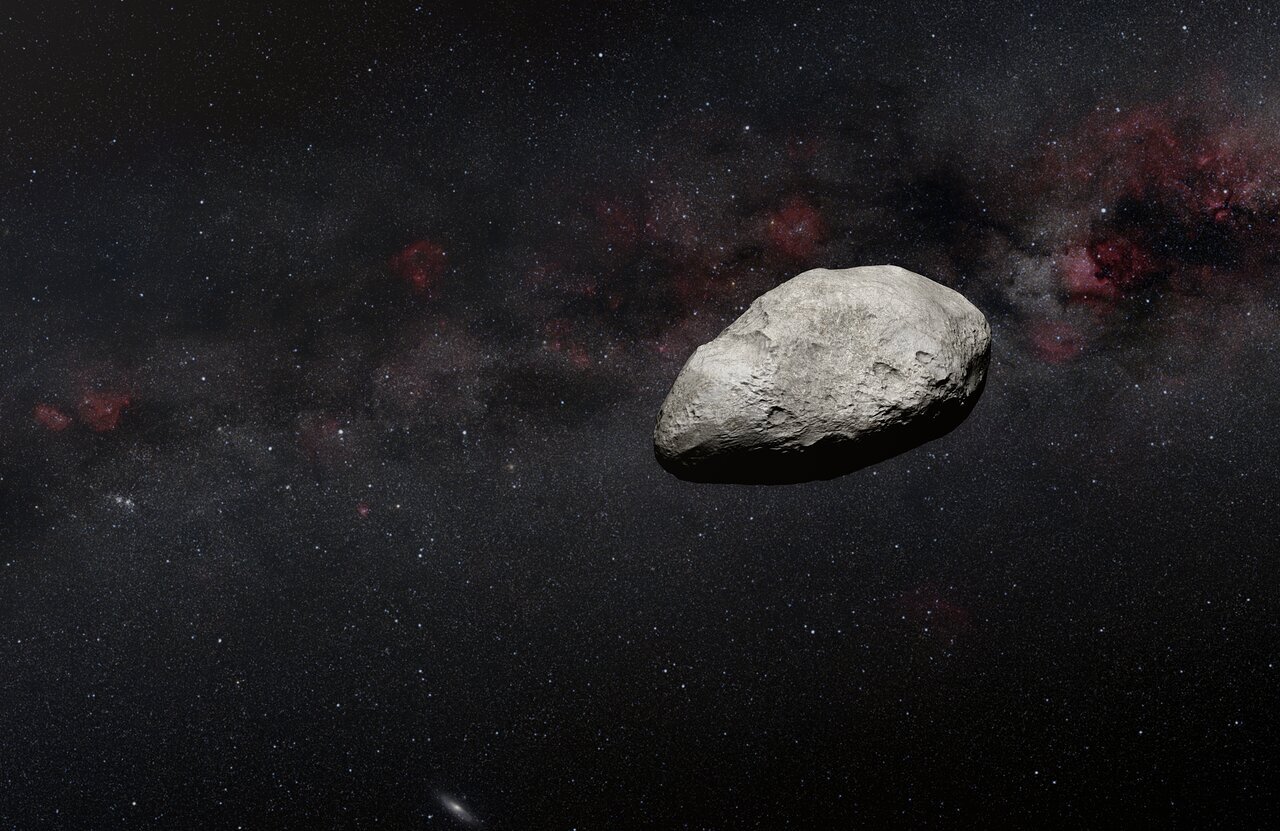Using the NASA/ESA/CSA James Webb Space Telescope, an international team of European astronomers has discovered a previously undiscovered 100 to 200 meter asteroid that is nearly the size of Rome’s Colosseum. The researchers accidentally discovered an asteroid during the calibration of the Mid-InfraRed Instrument (MIRI), which provided the data for their project.
The object is likely the smallest observed to date by Webb and may be an example of an object measuring under 1 kilometer in length within the main asteroid belt, located between Mars and Jupiter. More observations are needed to better characterize this object’s nature and properties.

This artist’s impression shows a grey, irregularly-shaped asteroid against a dark background. Credit: N. Bartmann (ESA/Webb), ESO/M. Kornmesser and S. Brunier, N. Risinger (skysurvey.org)
The solar system is teeming with asteroids and small rocky bodies—astronomers currently know of more than 1.1 million of these rocky remnants of the early days of the solar system. The NASA/ESA/CSA James Webb Space Telescope’s ability to explore these objects at infrared wavelengths is expected to lead to groundbreaking new science, but a team of scientists have shown that Webb also has an unpredicted aptitude for serendipitously detecting small and previously unknown objects.
“We—completely unexpectedly—detected a small asteroid in publicly available MIRI calibration observations,” explained Thomas Müller, an astronomer at the Max Planck Institute for Extraterrestrial Physics in Germany. “The measurements are some of the first MIRI measurements targeting the ecliptic plane and our work suggests that many, new objects will be detected with this instrument.”

The Webb observations which revealed this small asteroid were not originally designed to hunt for new asteroids—in fact, they were calibration images of the main-belt asteroid (10920) 1998 BC1, which astronomers discovered in 1998, but the calibration team considered them to have failed for technical reasons due to the brightness of the target and an offset telescope pointing. Despite this, the data on asteroid 10920 were used by the team to establish and test a new technique to constrain an object’s orbit and to estimate its size. The validity of the method was demonstrated for asteroid 10920 using the MIRI observations combined with data from ground-based telescopes and ESA’s Gaia mission.
In the course of the analysis of the MIRI data, the team found the smaller and previously unknown interloper in the same field of view. The team’s results suggest the object measures 100–200 meters, occupies a very low-inclination orbit, and was located in the inner main-belt region at the time of the Webb observations.
“Our results show that even ‘failed’ Webb observations can be scientifically useful, if you have the right mindset and a little bit of luck,” elaborated Müller. “Our detection lies in the main asteroid belt, but Webb’s incredible sensitivity made it possible to see this roughly 100-meter object at a distance of more than 100 million kilometers.”
The detection of this asteroid—which the team suspects to be the smallest observed to date by Webb and one of the smallest detected in the main-belt—would, if confirmed as a new asteroid discovery, have important implications for our understanding of the formation and evolution of the solar system.
Current models predict the occurrence of asteroids down to very small sizes, but small asteroids have been studied in less detail than their larger counterparts owing to the difficulty of observing these objects. Future dedicated Webb observations will allow astronomers to study asteroids smaller than 1 kilometer in size, providing the necessary data to refine our models of the solar system’s formation.
What’s more, this result suggests that Webb will also be able to serendipitously contribute to the detection of new asteroids. The team suspect that even short MIRI observations close to the plane of the solar system will always include a few asteroids, most of which will be unknown objects.
In order to confirm that the object detected is a newly discovered asteroid, more position data relative to background stars is required from follow-up studies to constrain the object’s orbit.
“This is a fantastic result which highlights the capabilities of MIRI to serendipitously detect a previously undetectable size of asteroid in the main belt,” concluded Bryan Holler, Webb support scientist at the Space Telescope Science Institute in Baltimore, U.S.. “Repeats of these observations are in the process of being scheduled, and we are fully expecting new asteroid interlopers in those images!”
The study is published in the journal Astronomy & Astrophysics.
Source: phys.org








